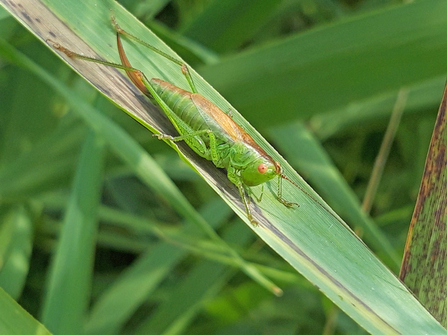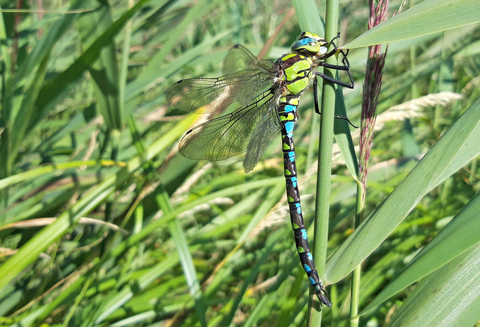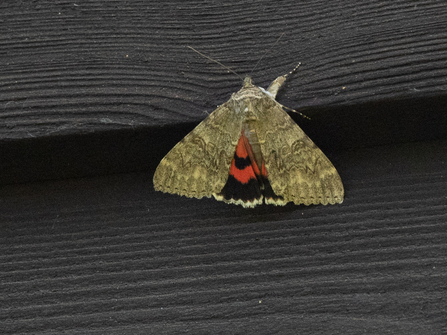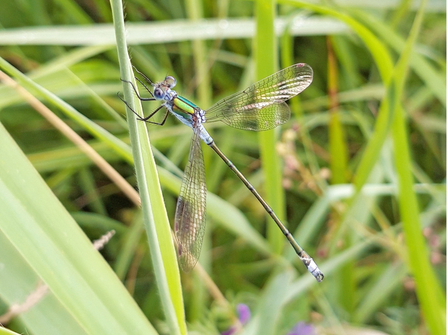The term ‘dragonflies’ is now used to describe both dragonflies and damselflies, and as over half of the British breeding species found in the Great Fen, it is a wonderful place to learn more about them. It is always a great privilege to be able to share the knowledge and experience that I have built up over the years, and more so when it is about dragonflies, a subject close to my heart.
The hot weather was offset by a cool breeze, which kept the smaller insects at bay but allowed the stronger fliers, such as the dragonflies, to put in a good performance. Sites like the Great Raveley Drain, at the end of the track past our Countryside Classroom at Ramsey Heights, provide good opportunities to see a range of species. Setting up territories on yellow waterlily pads were red-eyed damselflies and the more recent colonists to the country, small red-eyed damselflies. A walk across the bridge into Woodwalton Fen National Nature Reserve, provided yet more species in the shelter of the reeds and the trees.
Both guided walks took place on Sunday, one in the morning and one in the afternoon, each with a maximum of 6 people. The morning tour produced a list of 10 species of dragonfly, and the afternoon, 12. During the cooler morning, many insects were still warming up, providing good opportunities to photograph them, and to watch them basking in the sunshine as it came out from behind the clouds. Other insects were also becoming active.
Some insects were spotted only after the twitch of a leaf lead to a closer inspection of the vegetation. Use of a bat detector helped to find insects such as bush-crickets. Species discovered included the dark bush-cricket and the Roesel’s bush-cricket, the latter being a species which sings at a higher frequency and so without the assistance of the detector, not audible to all. The short-winged conehead, a species of brush-cricket that likes the damp conditions of the Fen, was occasionally seen, vivid green in colour and difficult to see at all, if they did not move. The females were seen, with their long, blade-like ovipositors, which they use for laying eggs.




